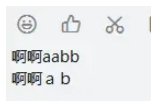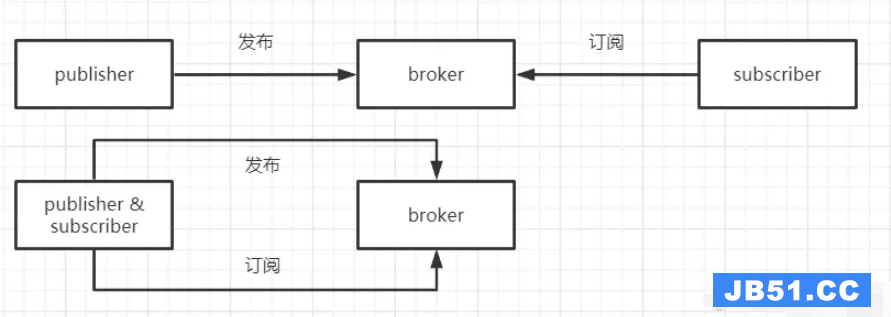本文实例为大家分享了自定义view实现了类似百度手机助手,首页评论滚动效果。
看效果:

gif做的不好,其效果就是:几个viewitem不停的向上滚动,新加入item有个淡入的效果。
说下实现思路:自定义view继承至LinearLayout,控制item数量及其动画效果,实现item复用,传入数据即可,使用方便。
代码:
/** * Jiantao.Yang * * @description 仿百度手机助手,评论滚动效果 * @time 2015/1/16 17:37 */ public class ViewFlipper extends LinearLayout { private final int MAX_SHOW_ITEM_SIZE = 5; private IAdapter mIAdapter; private int mCount; //最后一个item动画 private Animation mLastOneAnimation; //其它item动画 private Animation mCommonAnimation; //数据下标 private int mCurrentIndex; /** * 这里动画时间是1600毫秒,所以间隔得大于动画时间 */ private static final int DEFAULT_INTERVAL = 2000; private int mFlipInterval = DEFAULT_INTERVAL; private boolean mAutoStart = false; private boolean mRunning = false; private boolean mStarted = false; private boolean mVisible = false; private boolean mUserPresent = true; public ViewFlipper(Context context) { super(context); init(context); } public ViewFlipper(Context context,AttributeSet attrs) { super(context,attrs); init(context); } public ViewFlipper(Context context,AttributeSet attrs,int defStyleAttr) { super(context,attrs,defStyleAttr); init(context); } private final broadcastReceiver mReceiver = new broadcastReceiver() { @Override public void onReceive(Context context,Intent intent) { final String action = intent.getAction(); if (Intent.ACTION_SCREEN_OFF.equals(action)) { mUserPresent = false; updateRunning(); } else if (Intent.ACTION_USER_PRESENT.equals(action)) { mUserPresent = true; updateRunning(false); } } }; @Override protected void onAttachedToWindow() { super.onAttachedToWindow(); // Listen for broadcasts related to user-presence final IntentFilter filter = new IntentFilter(); filter.addAction(Intent.ACTION_SCREEN_OFF); filter.addAction(Intent.ACTION_USER_PRESENT); // OK,this is gross but needed. This class is supported by the // remote views machanism and as a part of that the remote views // can be inflated by a context for another user without the app // having interact users permission - just for loading resources. // For exmaple,when adding widgets from a user profile to the // home screen. Therefore,we register the receiver as the current // user not the one the context is for. getContext().registerReceiver(mReceiver,filter); if (mAutoStart) { // Automatically start when requested startFlipping(); } } @Override protected void onDetachedFromWindow() { super.onDetachedFromWindow(); mVisible = false; getContext().unregisterReceiver(mReceiver); updateRunning(); } @Override protected void onWindowVisibilityChanged(int visibility) { super.onWindowVisibilityChanged(visibility); mVisible = visibility == VISIBLE; updateRunning(mVisible); // updateRunning(false); } private void init(Context context) { this.setorientation(LinearLayout.VERTICAL); } public void setIAdapter(IAdapter iAdapter) { this.mIAdapter = iAdapter; initShowItems(); } public void startFlipping() { mStarted = true; updateRunning(); } public void stopFlipping() { mStarted = false; updateRunning(); } private void updateRunning() { updateRunning(true); } /** * Returns true if the child views are flipping. */ public boolean isFlipping() { return mStarted; } /** * Set if this view automatically calls {@link #startFlipping()} when it * becomes attached to a window. */ public void setAutoStart(boolean autoStart) { mAutoStart = autoStart; } /** * Returns true if this view automatically calls {@link #startFlipping()} * when it becomes attached to a window. */ public boolean isAutoStart() { return mAutoStart; } @Override public void onInitializeAccessibilityEvent(AccessibilityEvent event) { super.onInitializeAccessibilityEvent(event); event.setClassName(ViewFlipper.class.getName()); } @Override public void onInitializeAccessibilityNodeInfo(AccessibilityNodeInfo info) { super.onInitializeAccessibilityNodeInfo(info); info.setClassName(ViewFlipper.class.getName()); } /** * 初始化childViews */ private void initShowItems() { if (mIAdapter != null) { mCount = mIAdapter.getCount(); for (int i = 0; i < mCount; i++) { if (i == MAX_SHOW_ITEM_SIZE) { break; } View convertView = getChildAt(i); View item = mIAdapter.getItemView(convertView,i); addView(item,i); } } } /** * Internal method to start or stop dispatching flip {@link android.os.Message} based * on {@link #mRunning} and {@link #mVisible} state. * * @param flipNow Determines whether or not to execute the animation Now,in * addition to queuing future flips. If omitted,defaults to * true. */ private void updateRunning(boolean flipNow) { boolean running = mVisible && mStarted && mUserPresent; System.out.println(" updateRunning running:" + running + " mVisible " + mVisible + " userPresent " + mUserPresent); if (running != mRunning) { if (running && (mCount > MAX_SHOW_ITEM_SIZE)) { showItems(mCurrentIndex++,flipNow); Message msg = mHandler.obtainMessage(FLIP_MSG); mHandler.sendMessageDelayed(msg,mFlipInterval); } else { mHandler.removeMessages(FLIP_MSG); } mRunning = running; } } private void showItems(final int position,boolean animate) { if (animate && (mLastOneAnimation == null || mCommonAnimation == null)) { mLastOneAnimation = AnimationUtils.loadAnimation(getContext(),R.anim.lastone_anim); mCommonAnimation = AnimationUtils.loadAnimation(getContext(),R.anim.common_anim); } int childCount = getChildCount(); for (int i = 0; i < childCount; i++) { View child = getChildAt(i); child.clearanimation(); int index = position + i; child = mIAdapter.getItemView(child,(index >= mIAdapter.getCount()) ? (index - mIAdapter.getCount()) : index); if (animate) { if (i == childCount - 1) { child.setAnimation(mLastOneAnimation); } else { child.setAnimation(mCommonAnimation); } } child.setVisibility(View.VISIBLE); } if (animate) { mCommonAnimation.startNow(); mLastOneAnimation.startNow(); } //保证传入的position小于getCount if (mCurrentIndex >= mIAdapter.getCount()) { mCurrentIndex = 0; } } private final int FLIP_MSG = 1; private final Handler mHandler = new Handler() { @Override public void handleMessage(Message msg) { if (msg.what == FLIP_MSG) { if (mRunning) { showItems(mCurrentIndex++,true); msg = obtainMessage(FLIP_MSG); sendMessageDelayed(msg,mFlipInterval); } } } }; public interface IAdapter { /** * @param convertView * @param position * @return */ public View getItemView(View convertView,int position); /** * @return 数据count */ public int getCount(); } }
再来看看调用部分:
public class MainActivity extends ActionBaractivity implements ViewFlipper.IAdapter { ViewFlipper viewFlipper; @Override protected void onCreate(Bundle savedInstanceState) { super.onCreate(savedInstanceState); setContentView(R.layout.activity_main); viewFlipper = (ViewFlipper) findViewById(R.id.view_flipper); viewFlipper.setIAdapter(this); } @Override protected void onResume() { super.onResume(); viewFlipper.startFlipping(); } @Override public View getItemView(View convertView,int position) { View item = null; TextView textView; if (convertView == null) { item = View.inflate(this,R.layout.item,null); } else { item = convertView; } textView = (TextView) item.findViewById(R.id.textview); textView.setText("测试数据:" + position); return item; } @Override public int getCount() { return 8; } }
可以看出,MainActivity实现了ViewFlipper.IAdapter接口,setAdapter后调用startFlipper即可。
这里布局文件我就不贴出来了,附上工程源码,项目里动画时间有点长,修改下就ok。
限于水平有限,不足之处难免,望各位不舍指正,与君共勉。



